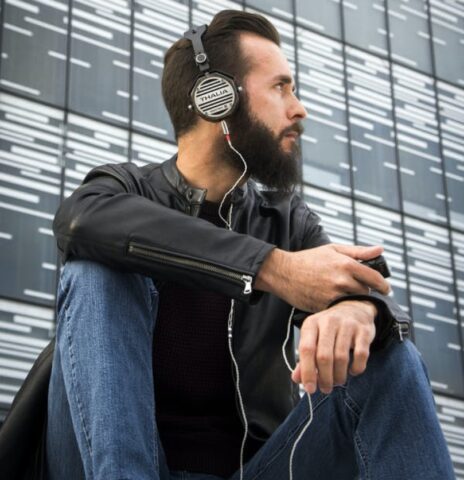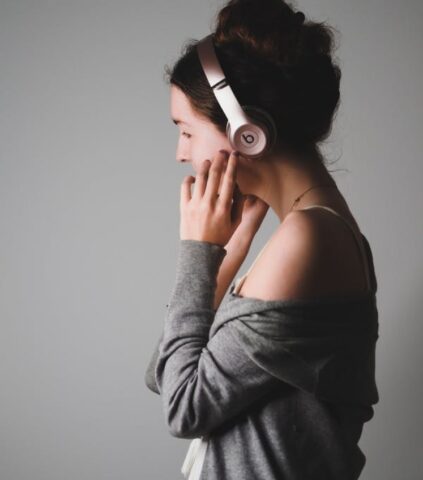Surely many of us have been stuck with an ad song for hours or even days. If so, we have been able to see first-hand the persuasive power of sound in advertising. But beyond the catchy melodies there are different sound techniques that contribute to enhancing the listener’s relationship with the brand in a positive way. This effect is produced thanks to the emotional intensity caused by listening to people. We talk about binaural recordings, ASMR or 3D positioning.
These surround sound techniques are authentic sound-sensory marketing weapons that the advertising industry has taken advantage of. Brand sound content, or sound branded content (hereinafter BCS), is an advertising format that consists of the creation of related content for the brand without advertising interference. This fact makes it ideal for exploiting the power of sound for entertainment purposes. But let’s go in parts.
Uniting the best of each style never fails
The techniques and styles for building a BCS are not number clausus. It is an open format, in constant evolution, that allows you to get the most out of the elements of the sound language, from the script to the sound editing. All the positive aspects of the medium and those of the advertising format converge in it.
The sound medium stands out for its intimacy. This happens because the sound is intended to be consumed individually. It also generates a feeling of affection between the speaker and the listener, a result of that intimacy. The degree of loyalty it obtains is one of the highest and, in addition, it is the medium that historically generates the most credibility.
Likewise, sound stimulates the imagination by generating mental images in the listener from all the auditory stimuli that it perceives. Unconsciously, we will put a face to the voices, we will draw the three-dimensional spaces and we will paint them in one color or another, depending on what the sound causes in us.
To the positive aspects that the sound medium contributes, we must add those that the format intrinsically generates. Branded content (content linked to a brand that connects with the consumer) is one of the advertising techniques that enjoy the most credibility, above conventional advertising formats. As it does not contain advertising, it is a non-intrusive marketing tool that improves the connection with the brand and, as a consequence, enhances the memory of it because the listener experiences the listening with greater intensity.
The confluence of all these positive aspects has as a result that sound branded content is the advertising format that achieves more participation from consumers, above audiovisual. A recent study by the BCMA (Branded Content Marketing Association) research and measurement commission confirms all these claims with data.
“Sounds that transform us”: branded sound content in its purest form

Inviting listeners to live an immersive listening experience through branded content provides added value with bidirectional results. On the one hand, we managed to capture the curiosity and interest of the listener with the listening experience. And on the other hand, the brand is reinforced by the vision that it has of it.
A clear example of BCS is “Sounds that transform us”, a podcast by La Vanguardia and Endesa that presents different social and sustainability initiatives in the process of decarbonization through immersive techniques.
The chapters of the series respond to the classic radio structure in which different elements of continuity appear. The entry and exit masks aurally frame their branded content nature. The storytelling takes place accompanied by various elements of the radio language, which are what help us to build the story through sound: generative music, environments, emotional voice, testimonies.
To all these ingredients we must add the application of the immersive sound techniques with which the listener is part of the three-dimensional sound content. The listener no longer just listens, but occupies an active position and can wander freely through the auditory content created for their enjoyment.
To achieve optimal results, it is necessary to use headphones. This is how listeners are warned when starting the podcast. This forces them to find a suitable space and time in which they do not foresee interruptions or external sounds that could interfere with listening. In addition, it contributes to the creation of the ideal atmosphere to achieve the desired goal: to immerse the listener in a format sculpted with sounds. But the most important function that listening with headphones will fulfill will be to avoid the loss of information that sounds contribute in the context.
This is how the human body reacts with immersive techniques

Surround sound manages to establish an intimate relationship with the listener that goes beyond the ears. Who has not been caressed by the musical waves while dancing in front of a speaker in a nightclub or has seen how the hair on his arms stood up when he heard chalk squeak on the school blackboard? As we can see, sound not only generates emotions, but is capable of exerting physical reactions in us, either due to its high intensity or due to low frequencies.
One of the techniques used in the sound project that is the object of this article has been the use of ASMR sounds (Autonomous Meridian Sensory Response). Soft and repetitive voices and sounds generate a pleasant low-grade sensation in the interlocutor, in addition to awakening positive feelings. The luckiest ones experience a slight tingling sensation in their body.
We can also achieve the effect of sound immersion with the use of alpha waves or Berger waves, named after their discoverer, a German neurologist and psychiatrist, at the beginning of the last century. These waves are those that our brain emits when in “awake mode” it enters a state of relaxation. These are electromagnetic oscillations with frequencies ranging from 8 to 14 Hertz. When we submit to listening to this range of frequencies, in addition to immediately experiencing an increase in our state of relaxation, we develop part of the potential of our mind that is stimulated through sounds. In the long run, this translates into an increase in our memory and concentration skills.
The sound that we perceive in real life is already immersive per se. Thanks to our auditory system we are able to determine the position and distance of sound sources. Without turning on our body, we perceive sounds in a 360-degree range. Obtaining the same perception with a recorded format is possible thanks to binaural recordings. With them, we are able to reproduce the acoustics of three-dimensional environments and we are able to place ourselves aurally in a certain location. Two microphones, separated from each other by a mass that emulates the density of a skull, and at the same distance as our ears, pick up the sound as if it were a human being. When we reproduce the recorded waves, our mind is able to draw the space in which the waves have been captured and position the sound generators in it.
Listening experiences yes, but with meaning
The use of immersive techniques to construct a sound content should not be the result of a technical whim, a fad or a mere auditory ornament, but must be applied diligently to lead us to the desired effectiveness.
The sounds treated through sophisticated software and captured by complex recording systems must provide information, that is, they must complete the narrative content. Thus, it will be key that these have been extracted from reality with quality and that they are adequately treated technically and narratively. Otherwise, they will produce two unwanted effects: auditory chaos and misinformation.
Let’s bet on exploiting the power of sound branded content. Let’s experiment with sound and its techniques. Let’s live the renaissance of the sound medium, until recently forgotten by brands. But as responsible captains, let us always embark the listener and the brand on an honest, rigorous and meaningful sound journey.

